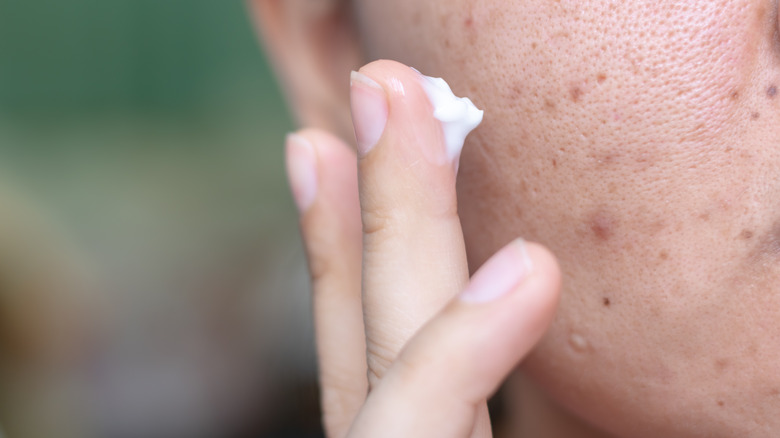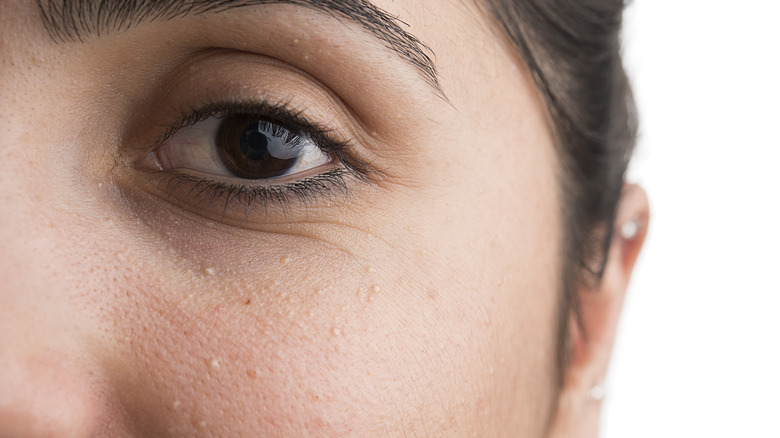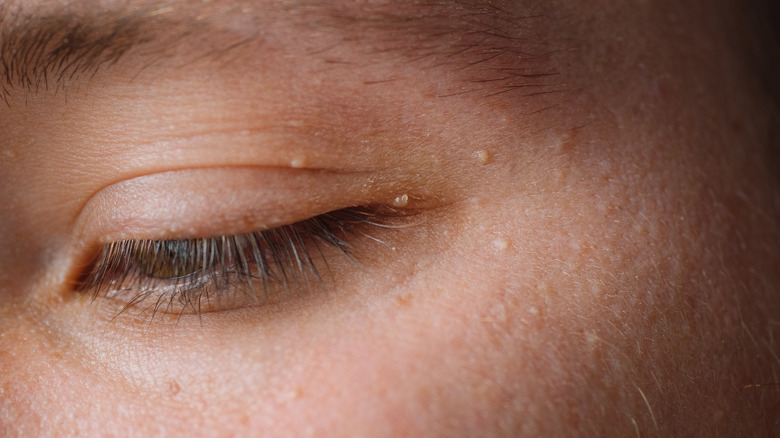What's The Difference Between Milia And Whiteheads
When you suffer from acne, it can sometimes be hard to differentiate between the types of spots that appear on your skin. One of the most common to appear are whiteheads, which occur when a pore on the skin — particularly the face — becomes clogged with "sebum, dead skin cells, and debris," according to the holistic health site bioClarity. Whiteheads can be easily confused with more severe types of acne, including papules and pustules which are inflamed in appearance and can contain a build-up of bacteria and pus as opposed to whiteheads.
Other marks on your face can sometimes be confused with whiteheads, too, including tiny white spots known as milia. According to the Cleveland Clinic, milia are small white spots that usually occur around the eyes. While they may seem similar in appearance, milia are completely different from whiteheads and will not react in the same way to any acne or medical treatment.
Milia occur when a type of protein is trapped under the skin
According to Healthline, milia are made up of a naturally-produced protein called keratin — the same one that makes up your hair and nails. It's also a building block of the skin, particularly the outer layer known as the epidermis. This particular protein is one of the many building blocks of your body (via the Cleveland Clinic). Still, it can sometimes cause a problem on the outer layer of the skin.
While milia can appear anywhere on your skin, you'll most likely encounter one on your face, particularly near the eyes. According to WebMD, milia occur when dead skin cells get trapped under a new layer of skin. The keratin then hardens and becomes a visible spot known as a "milium." Depending on how much keratin has been trapped, milia can vary in size and quantity.
So instead of being made up of excess oil or sebum-like whiteheads, milia consist of a build-up of keratin.
Milia can go away on their own, but there are treatments available
While milia tend to pop up on their own, they can be caused by not washing your face correctly, clogged pores, a lack of sleep, and some skin conditions, in addition to UV exposure (via WebMD). These small keratin deposits can also be hereditary, a symptom of an "autoimmune condition," or a side effect of any medication that includes steroids.
If you're conscious of the appearance of milia or you're worried that it's a symptom of something else, always check with your doctor or a dermatologist. But there are ways to treat them yourself — so long as you don't attempt to pop or extract them. Healthline suggests gentle exfoliation as the best cause of action, as this can help break the skin and remove the keratin gradually. Steam is also an excellent remedy that helps open the pores to make it easier for dead skin to shed. There are also a variety of over-the-counter medicines you can try, but simply exfoliating your skin regularly can help keep keratin buildup at bay.


